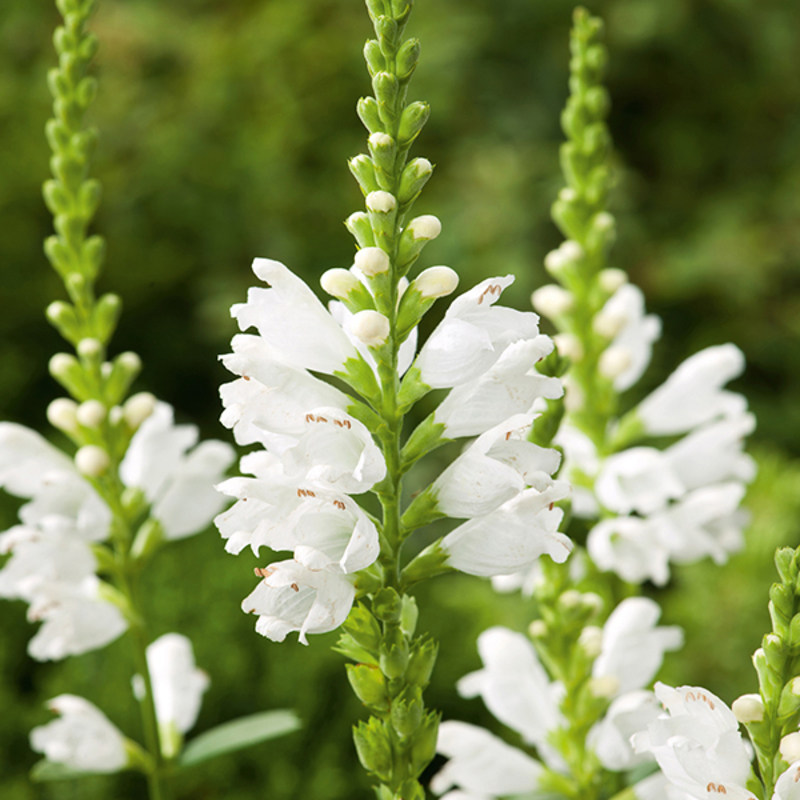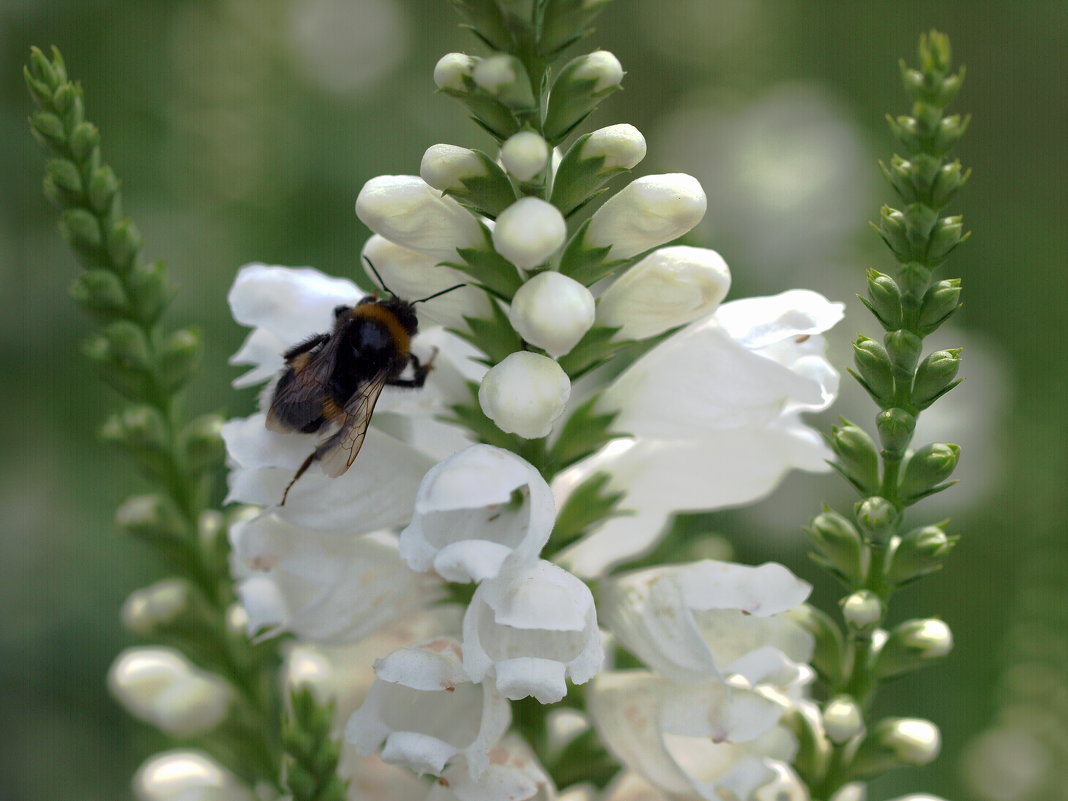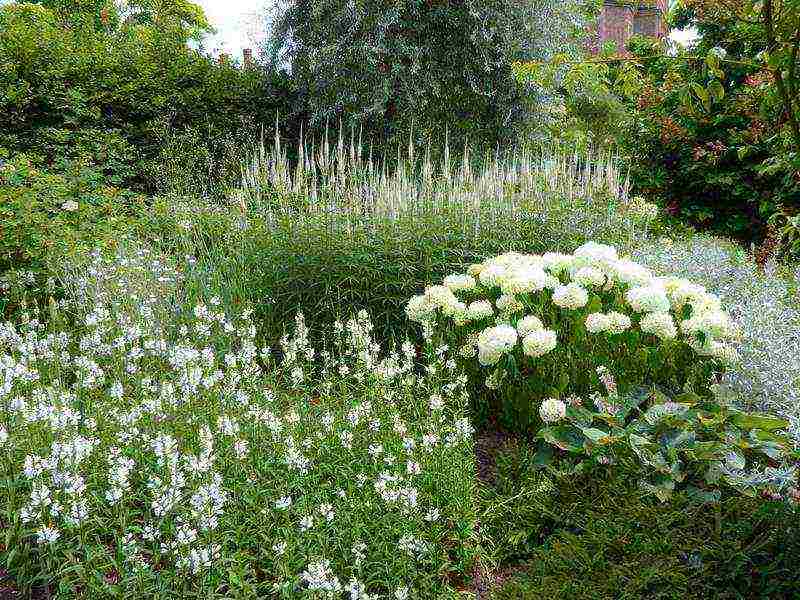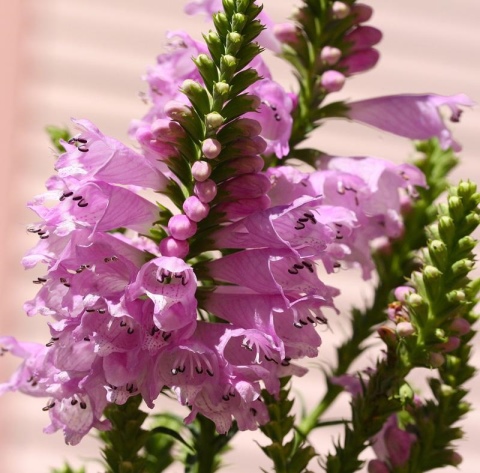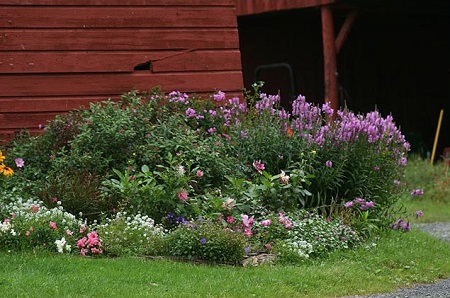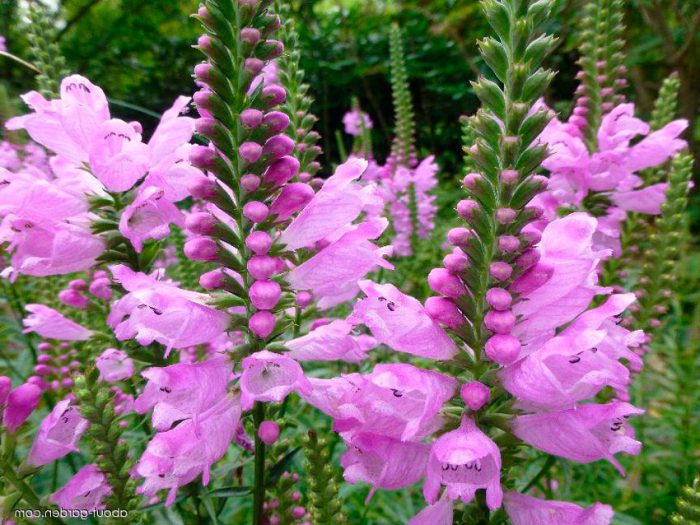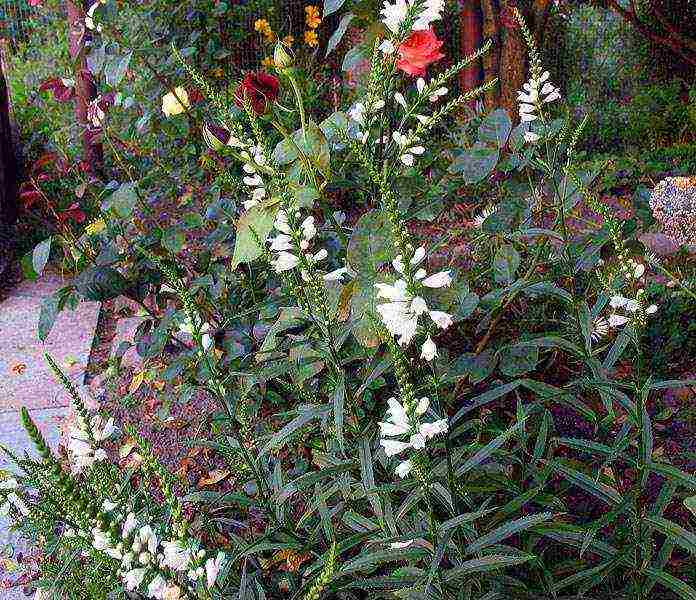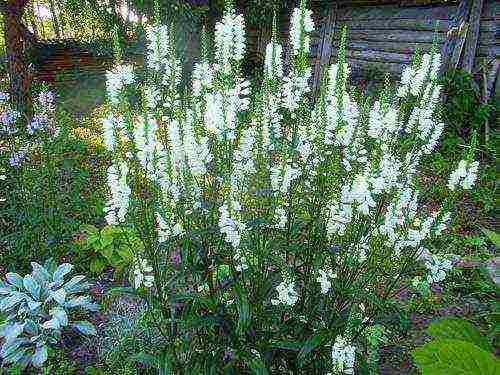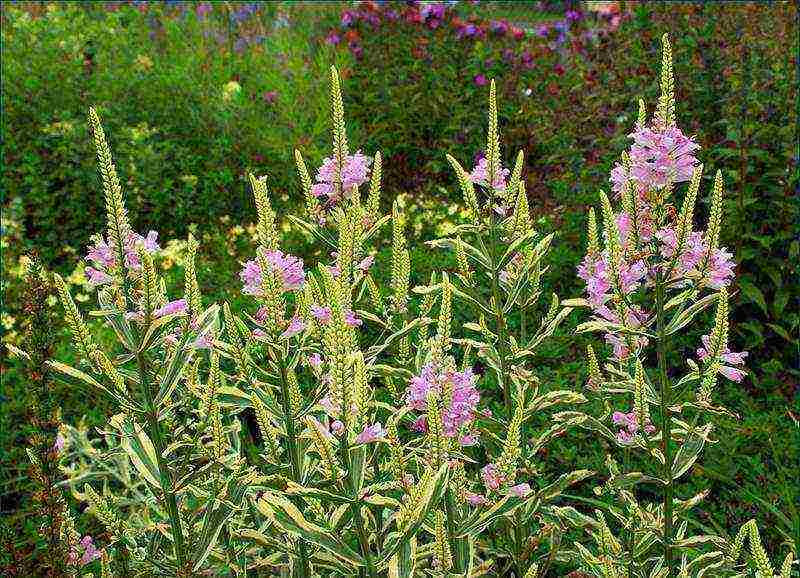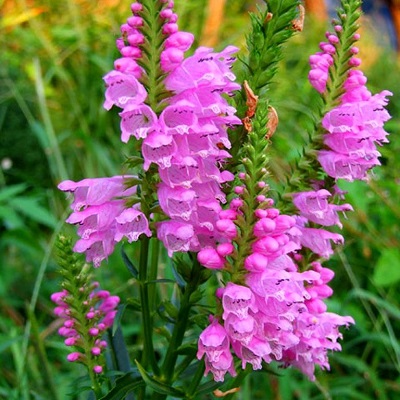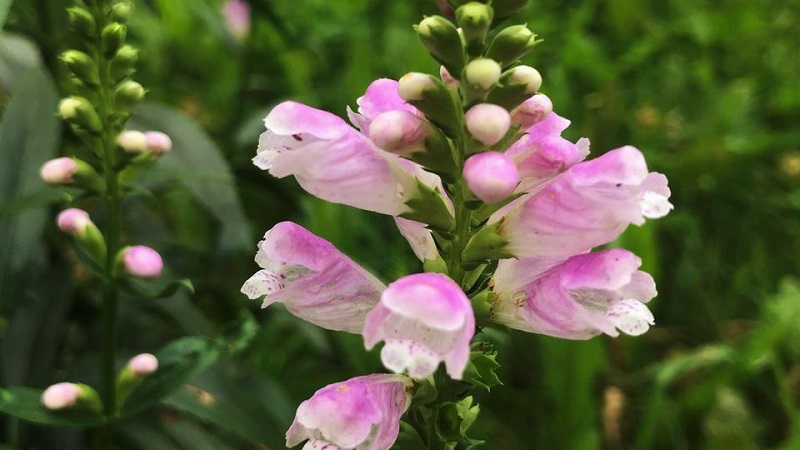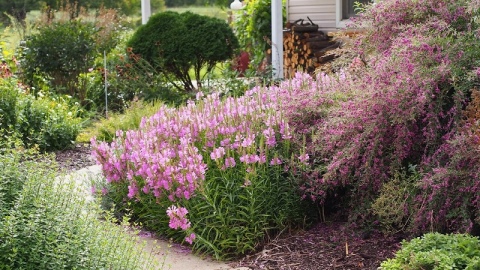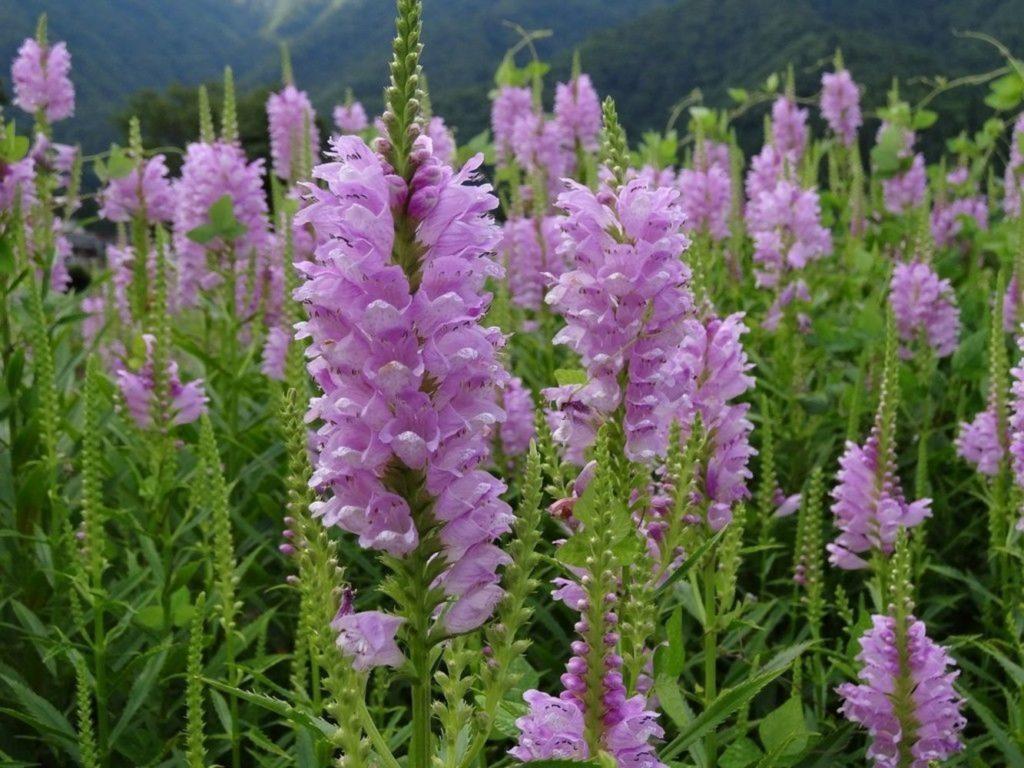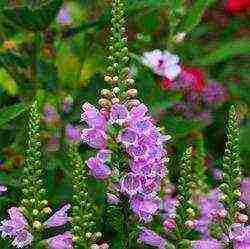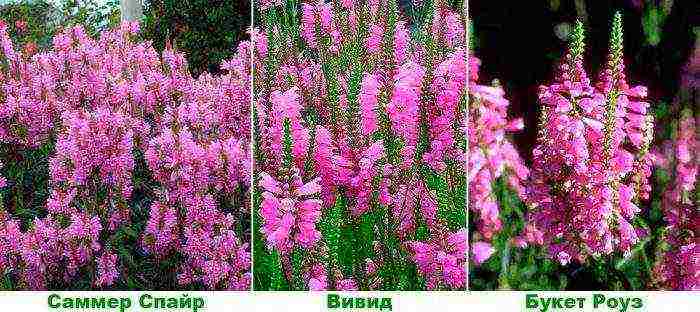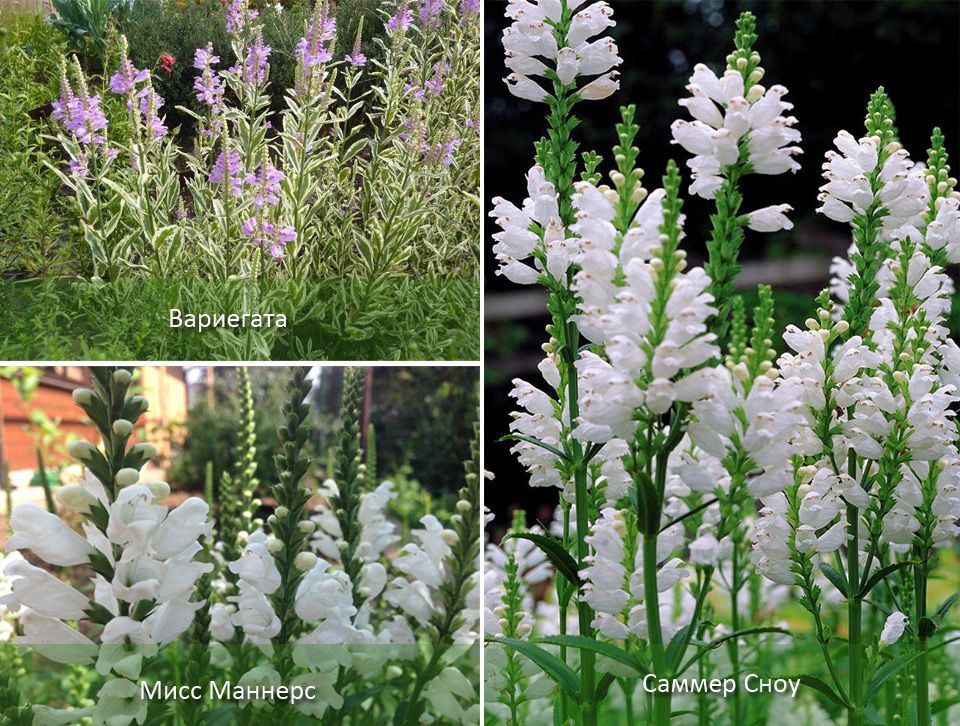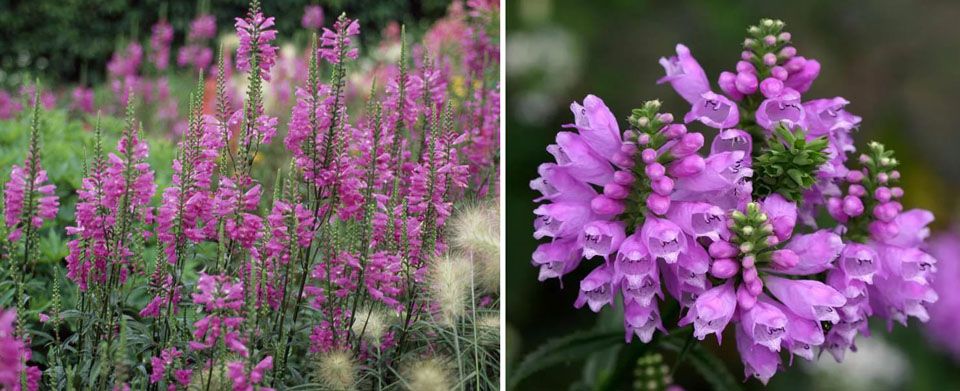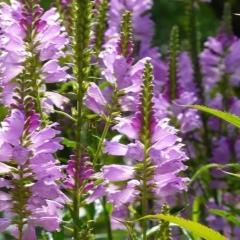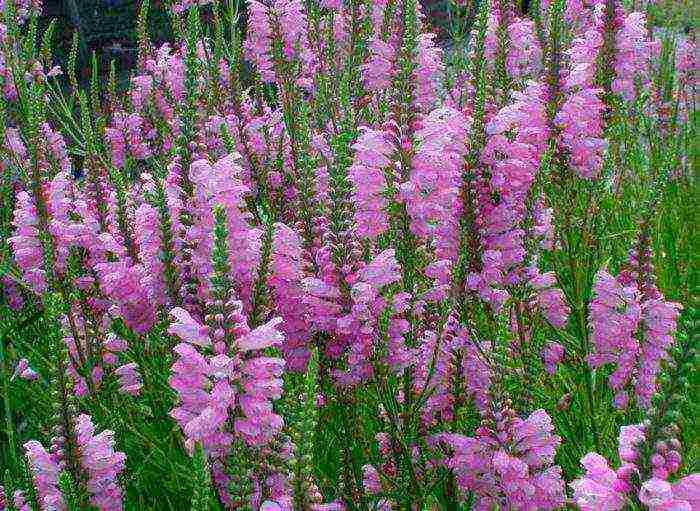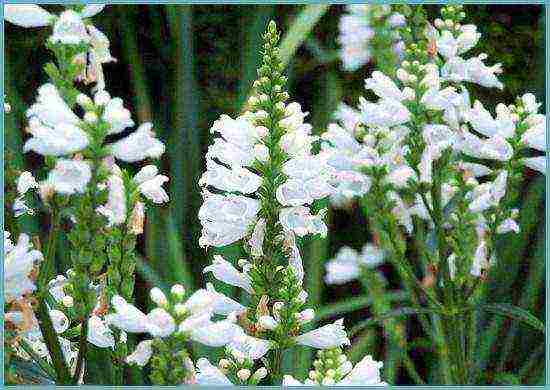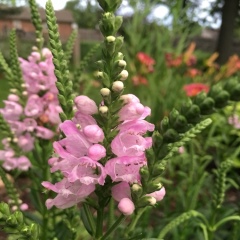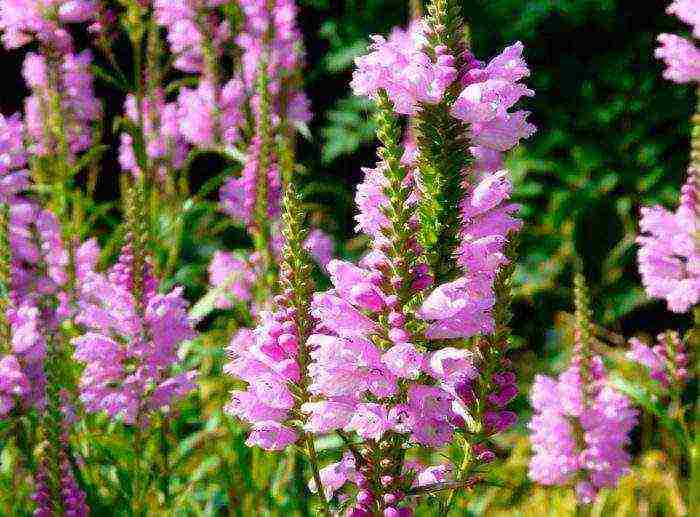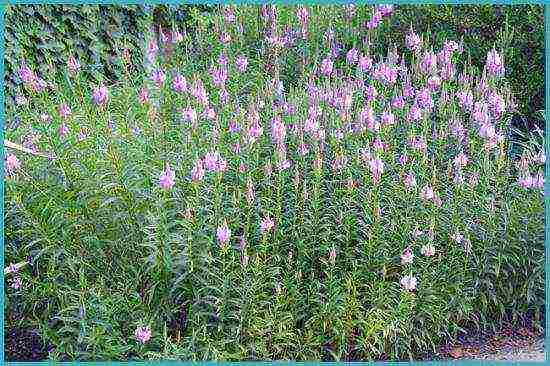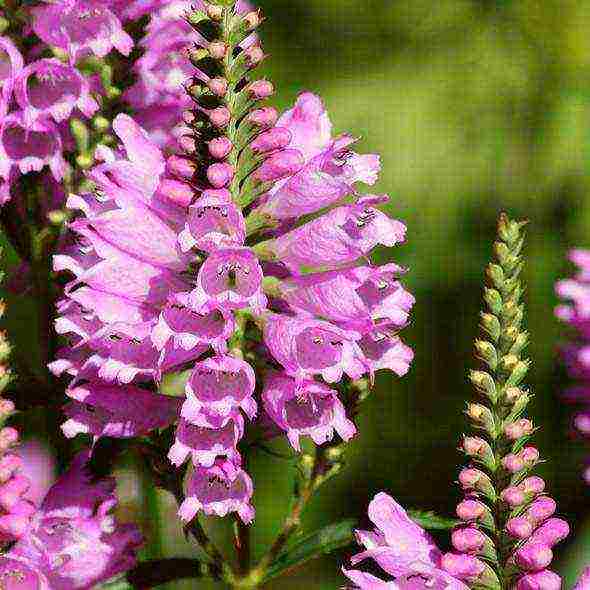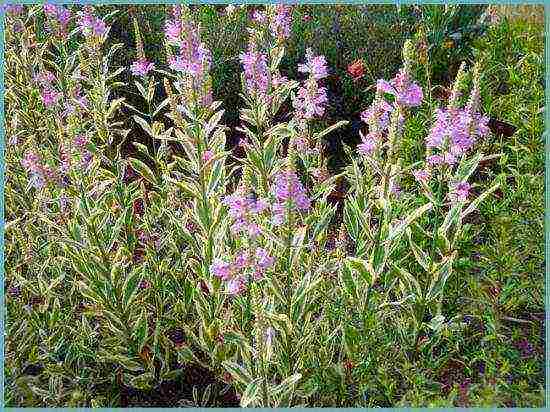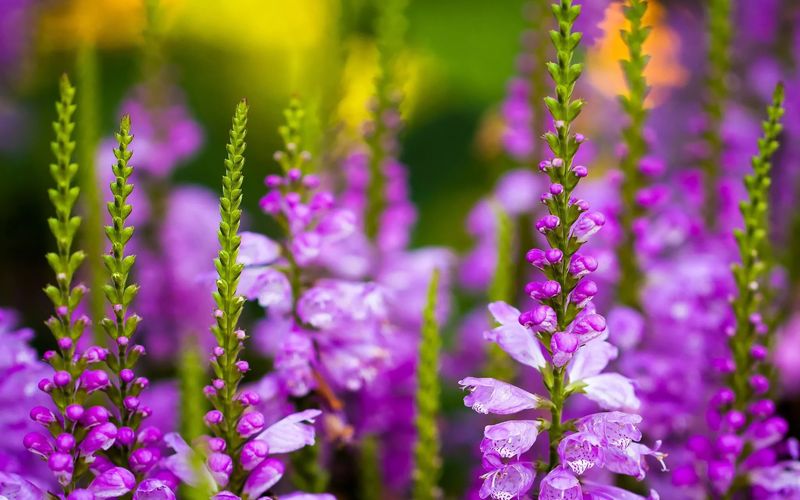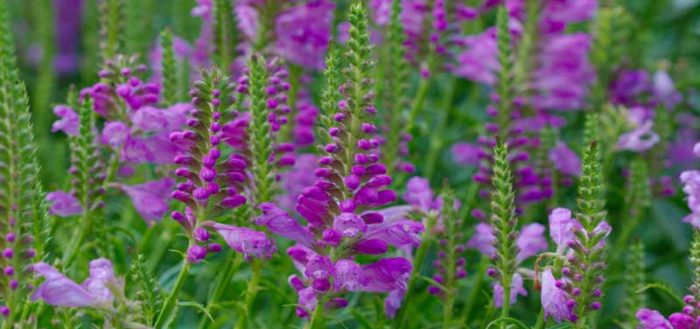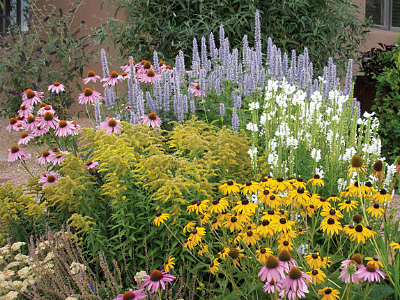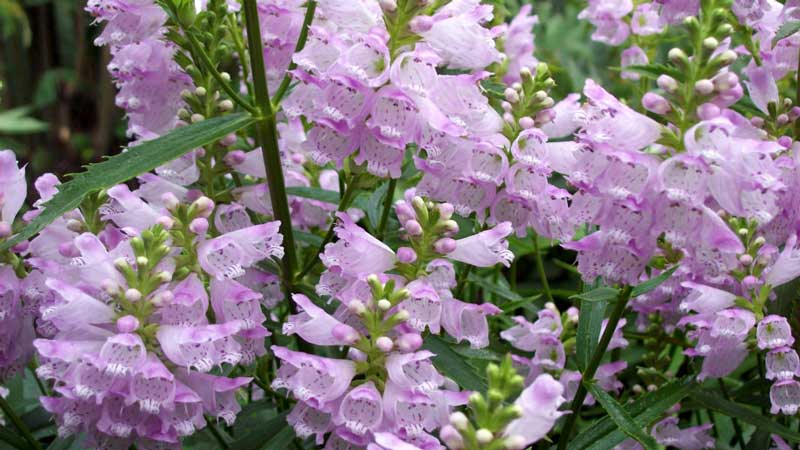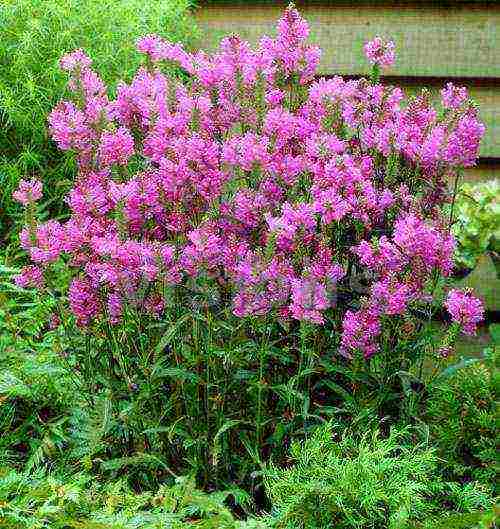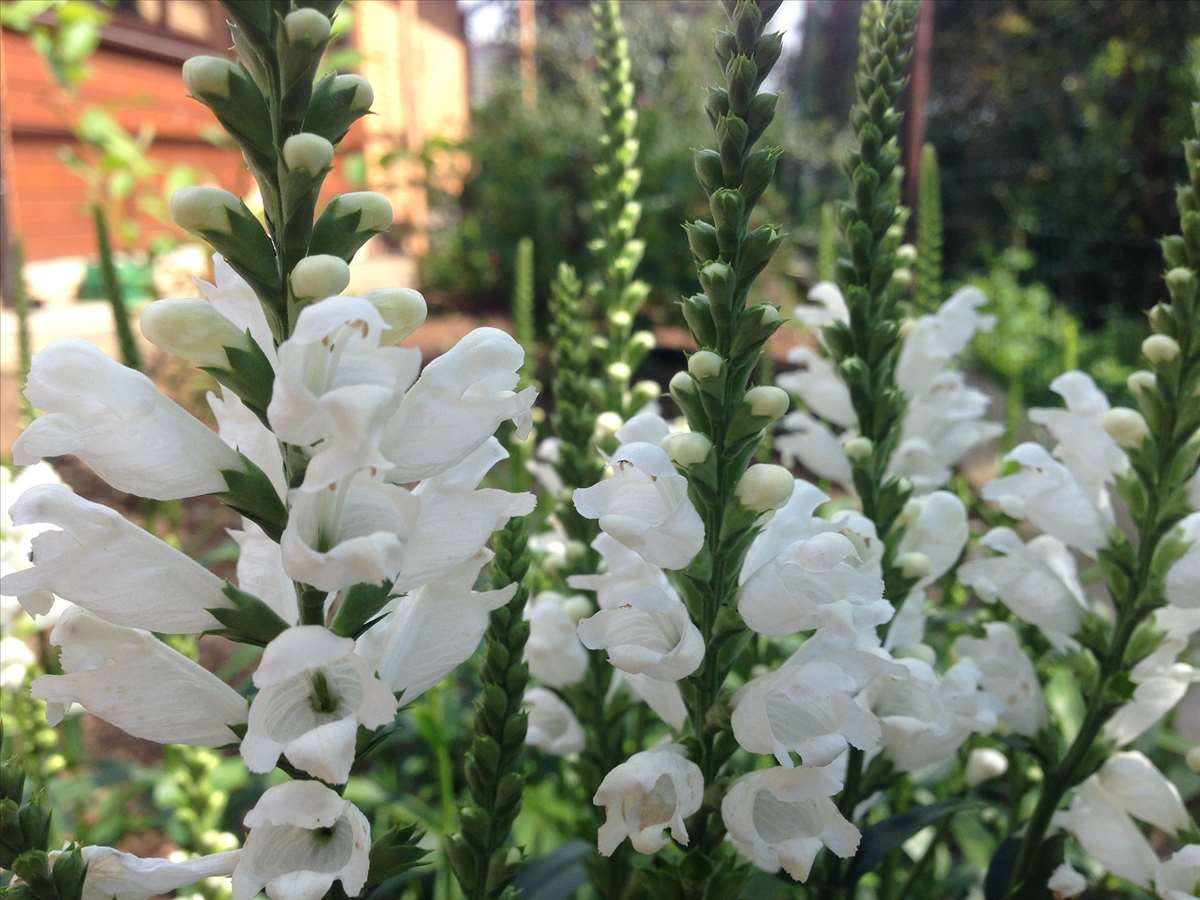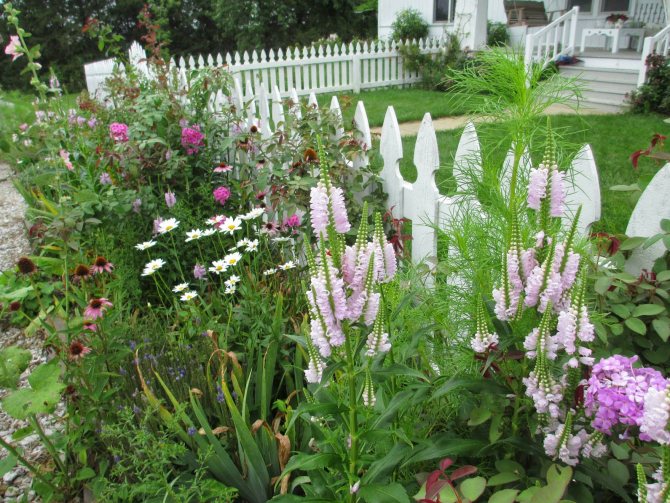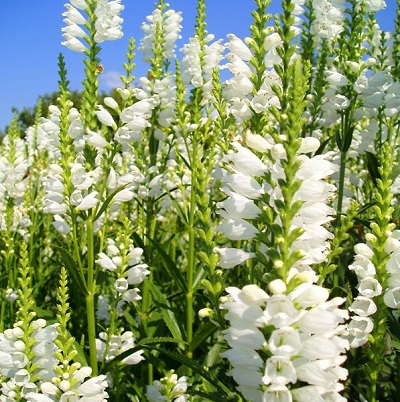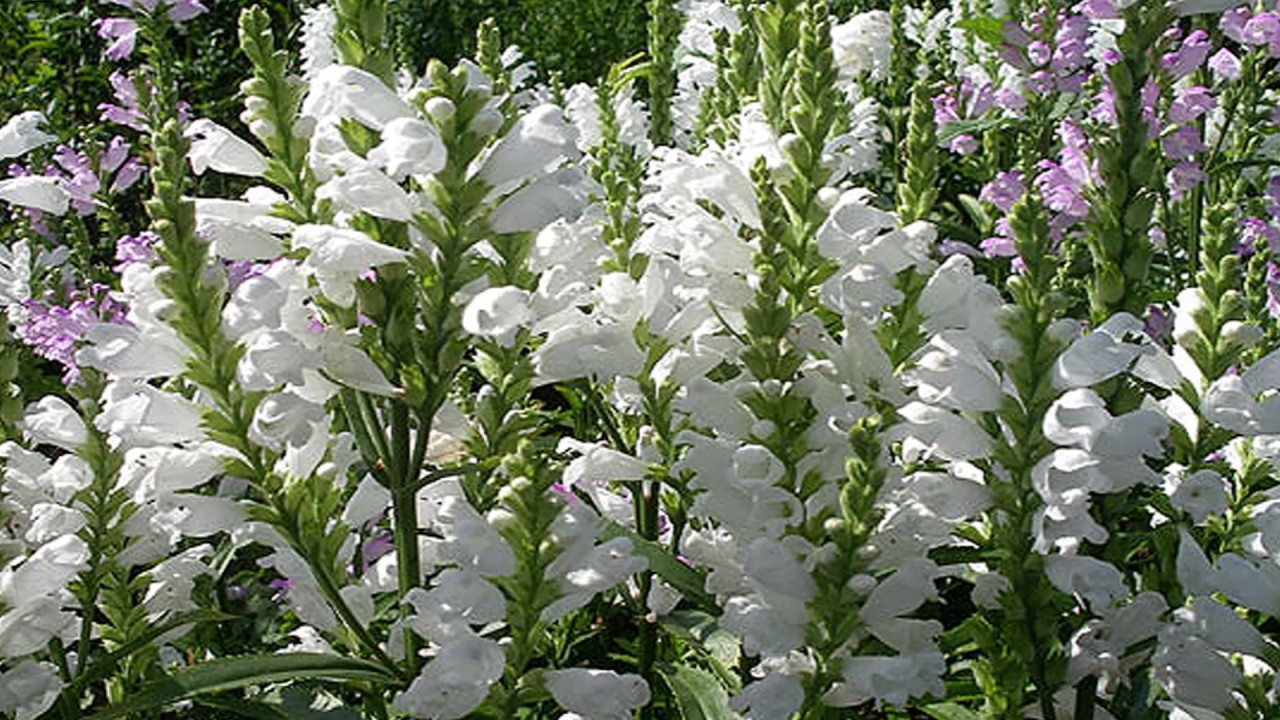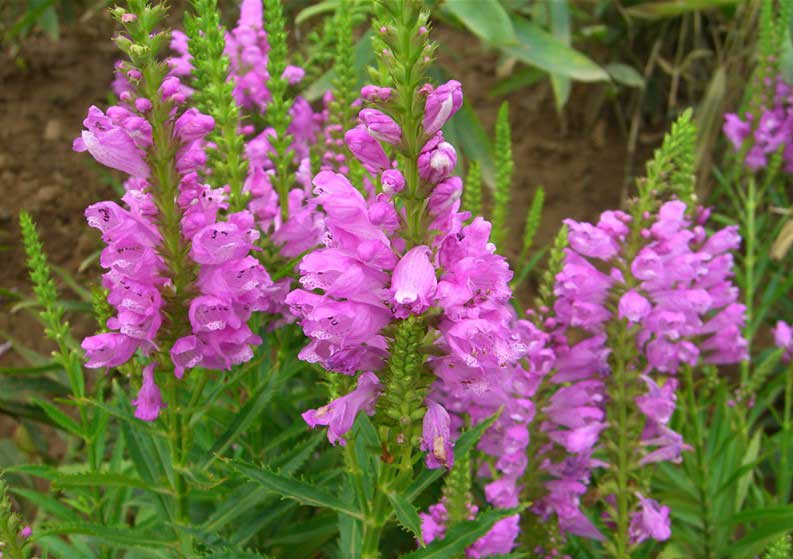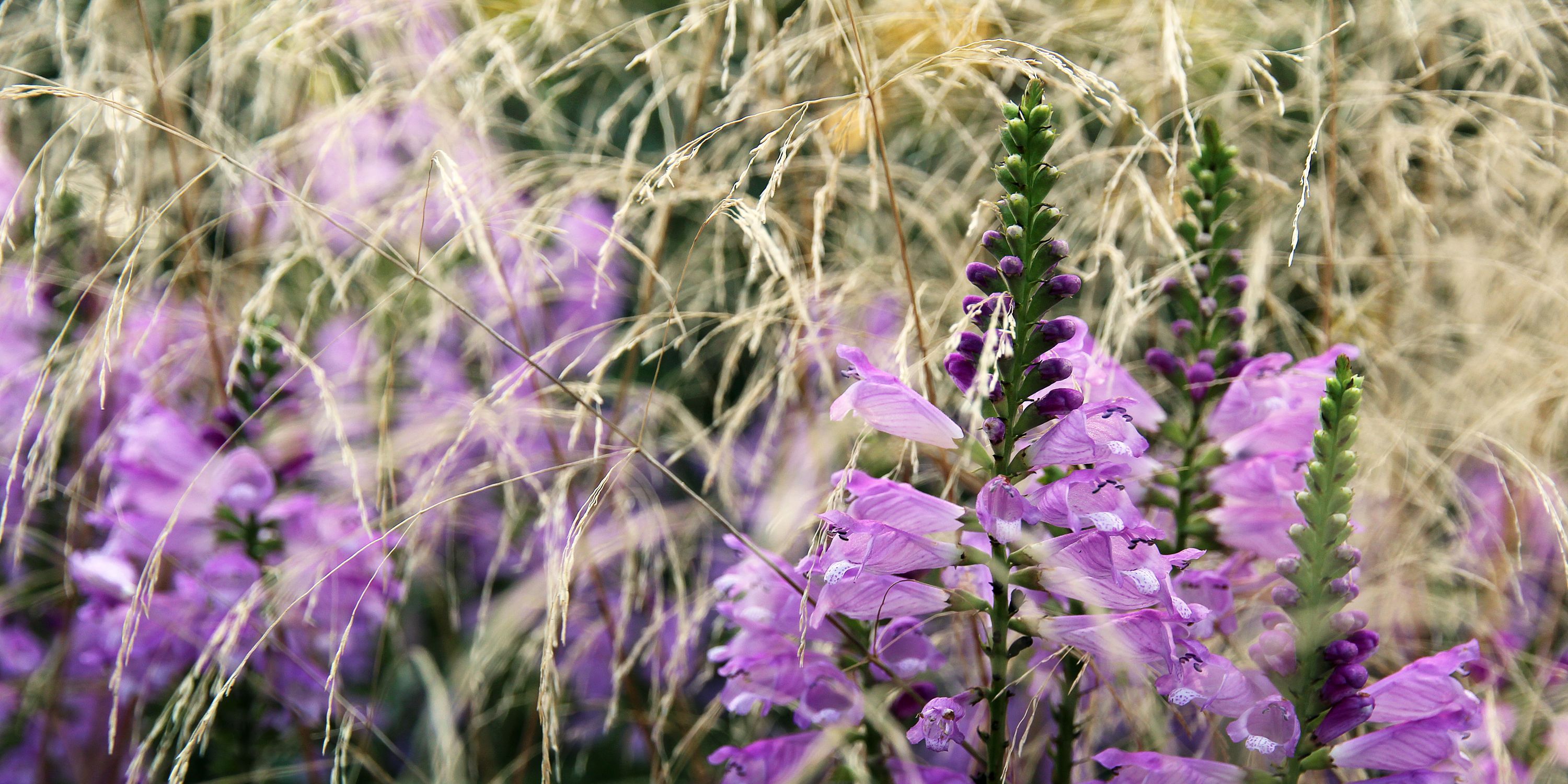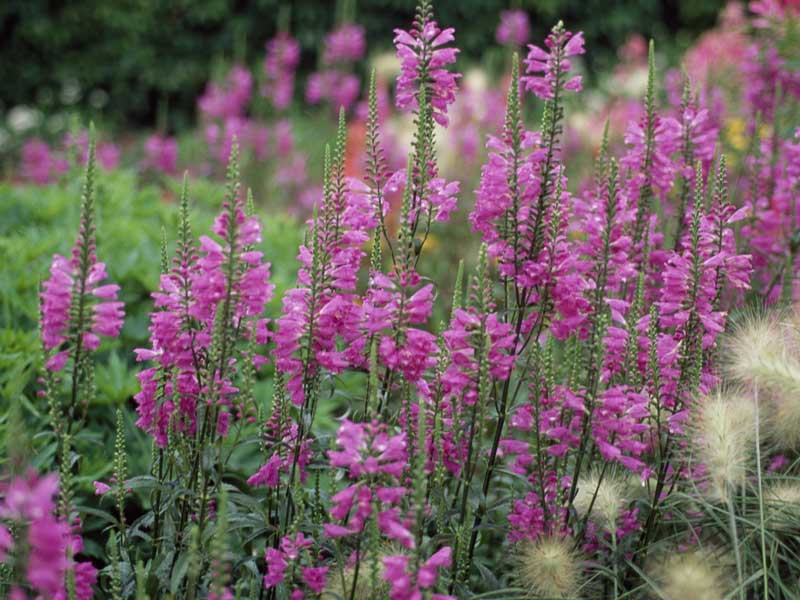Care features
When physostegia is planted, it must be properly cared for. So the bush will not grow chaotically and be less exposed to diseases and pests.
Watering
A moist soil is very important for a plant. Moisture should always remain in the ground. To do this, either choose a damp place, or constantly water and prevent dry soil.
It is important to remember that watering is timely and not excessive. Waterlogged soil can cause root rot
This can happen even when the root of the plant is strong enough and has grown strongly underground.
Care with soil
For oxygen to enter the soil, it must be constantly loosened. In order not to carry out constant loosening, the soil can be covered with mulch from peat, straw, grass or sawdust. This will protect the soil from drying out and prevent weeds from growing.
Top dressing
Like all perennials that have been growing in one place for several years, physical stimulation needs feeding. Over time, the soil becomes impoverished, and the plant requires additional feeding.
You need to fertilize the bush several times a season with complex fertilizers, which should be applied at the root. You need to be careful with nitrogen fertilizers, since it can negatively affect perennials. Florists recommend using Plantafol, Kemira, Aquamarine, Kristalon.
If the soil is very poor in composition, humus can be added to it. Fertilization with a complex mineral agent should also be.
Preparing for winter
For the winter, the physostegia is pruned, leaving only 5 cm above the ground level so that the plant does not freeze and die. If a harsh winter is expected, the plant is covered with a layer of mulch of 10-15 cm.
> Physostegy varieties with photos
Of all the types of physicalostegia, only one type has been cultivated - virginian physicalostegia. The most beautiful varieties of the Virginian species are:
Physostegia landing and care
Growing from seeds in the open field
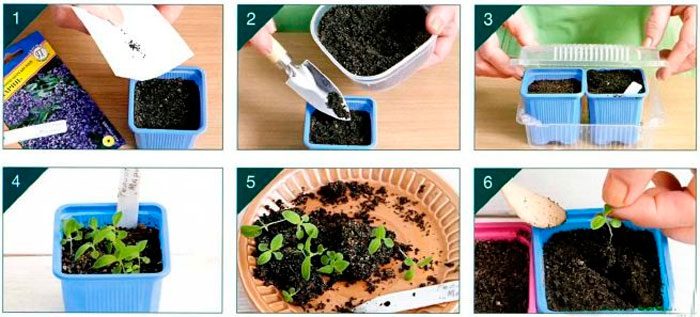
Sowing
Anyone who decides to grow such a flower from seeds should remember that the choice of planting material should be taken with full responsibility. You need to buy seeds only in a good specialty store, while preference should be given to such proven brands as: Prestige, Search, Johnsons or Unwins Seeds, because they can guarantee high quality and good quality seeds. In the event that the planting material is of good quality, then flowering from the moment the seedling appears in 3-4 months. If you decide to sow self-collected seeds, then you need to be prepared for the fact that their germination is rather poor, such plants bloom only at the end of the summer period, the bushes themselves can be of different heights, and their inflorescences are smaller than usual.
Sowing seedlings

Sowing seeds for seedlings is necessary at the end of winter and early spring. An earth mixture consisting of peat and sand (4: 1) must be thoroughly steamed in order to exclude the possibility of contamination of seeds with various fungal infections. Pour the prepared soil mixture into the container and compact it with a plank. After that, you can start sowing, for this you need to evenly distribute the seeds on the surface of the substrate, and then sprinkle them on top with the same mixture, while the layer should be equal to 0.1-0.2 centimeters, but not more. The container on top must be covered with glass or film, and then it must be placed in a warm place (from 18 to 20 degrees). After the seedlings appear, about 5–20 days after sowing, the glass must be removed from the container and moved to the windowsill.The temperature should be slightly raised to 20-22 degrees. At the same time, bright lighting is not required for seedlings, since they grow and develop well without it.
Seedling
When the seedlings grow 2 true leaves, they will need to be dived. They are seated in separate pots with a nine-centimeter diameter, while filling them with the same earth mixture. After the transplant, the seedlings must be watered. Half a month after the pick, young plants should be fed. For this, fertilizer is used for seedlings.
Landing
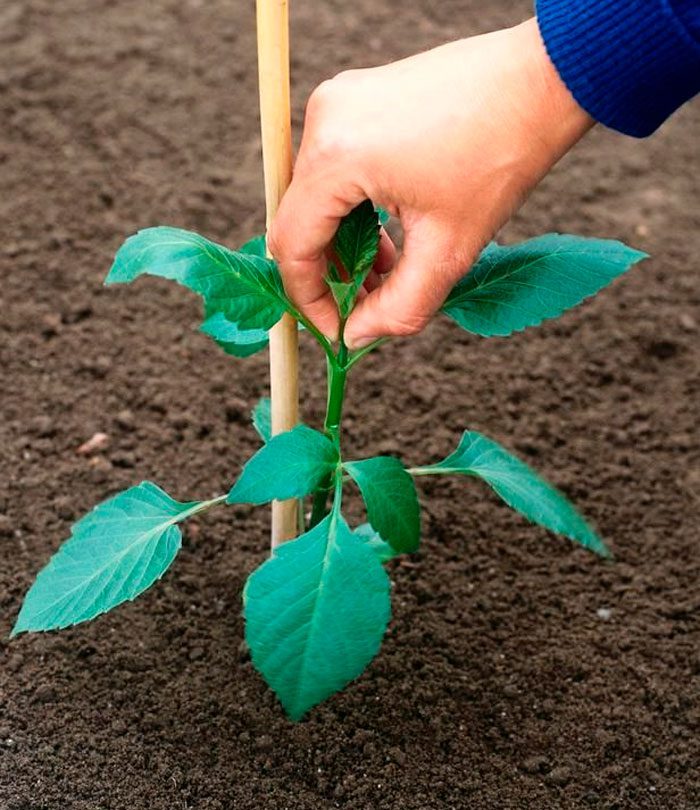
This flower should be transplanted into open ground at the beginning of summer, when the threat of frost at night has passed. A place suitable for heliotrope should be sunny, and the soil needs a loose, well-permeable water, enriched with nutrients, and also containing a large amount of humus.
Pour leaf and manure humus into the prepared hole. After that, you need to carefully load the flower into it and cover it with ordinary garden soil. The soil is squeezed near the plant, and then watering is carried out.
Heliotrope growing through seedlings and care
Use in landscape design
The decorative leaves of the physostegia and the long flowering have made it a favorite of landscape designers and hobby gardeners. It is grown along the perimeter of fences, in prefabricated mixborders, for landscaping the area near decorative ponds and fountains, as a tapeworm in the design of lawns.
Partners in prefabricated flower beds can be: phlox, dahlias, yaskolka, tradescantia, echinacea, chamomile. Excellent results are achieved by combining physostegy with conifers: dwarf spruces, thujas, junipers.
Physostegy flower stalks are successfully used to decorate bouquets. In flowerpots with water, all flowers bloom and retain their decorative effect for a long time.
A herbaceous perennial plant physostegia (Physostegia) is a representative of the family Labiatae or Clarice. According to information taken from various sources, this genus unites 3–12 species. Such plants can be found in the wild in North America. The name physostegia comes from 2 Greek words that translate as "bubble" and "cover", which is associated with the calyx of the flower, which has a swollen shape. Because of this feature of the plant, it is also called "false snakehead". Gardeners cultivate only one species - virginian physicalostegia.
Physostegy in landscape design photo
Looks most impressive in group plantings. Good for framing paths. Plant along fences, garden buildings, in mixborders, near water bodies. Good neighbors will be dahlias, echinacea, veronica, phlox, thuja, catnip, juniper, dwarf pines.
Physostegia and roses photo flower beds
White physostegia looks luxurious in joint plantings with scarlet roses.
Physostegia variegated in garden design photo flower beds
Growing and care
Location. It grows equally well both in open sunny areas and in light shade.
The soil. Loose rich soil, not too light, moist. On scanty dry soils, physostegia may die.
Landing. Before planting physostegia, it is recommended to add peat, compost and mineral fertilizers to the hole. The bushes are planted at a distance of 45-50 cm. The plant's growth pattern is aggressive. The roots grow very quickly, oppressing those growing near neighbors. When planting, you need to take into account this feature of physostegy. Ways to solve the problem:
- along the perimeter of the landing pit to a depth of 30-40 cm, dig in a metal, wooden, plastic fence; pieces of slate are also suitable for this purpose;
- regularly dig up excess growth along with the roots.
Ripening Physostegy Seeds
Watering. The plant is demanding on soil moisture. Regular abundant watering is required. Some time after watering soil around the bushes should be loosened to provide air access to the root system.
Top dressing.The plant is very responsive to fertilization. For abundant flowering, it is necessary to make complex water-soluble dressings every two weeks, combining them with watering.
Pruning. In the fall, shoots are cut just above ground level. Pruning too short can freeze the plant.
Transfer. After planting, the plant reaches full decorative effect for 2-3 years. Further, for a few more years (up to five), physostegy can grow in one place. In the future, to preserve decorativeness, the bushes need to be divided and planted.
Diseases and pests. Under unfavorable conditions, it is affected by fungal diseases. At the first signs of the disease, as well as for prevention, the plant must be treated with fungicides.
Shelter for the winter. In regions with severe winters, it is advisable to shelter with coniferous spruce branches or other materials. In regions with warm climates, the plant hibernates without shelter.
Physostegia virginskaya in the area
Physostegia Virginia will delight even the most "lazy" summer resident
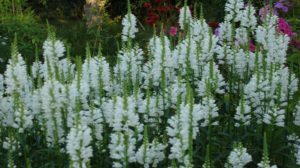
Physostegia virginiana is an unpretentious and very beautiful flower. It fits perfectly into the concept of a weekend garden. This graceful plant has a strange "geometry": a tetrahedral stem and white, pink or purple flowers arranged in vertical rows.
Physostegia belongs to the Labiaceae family. Amateur flower growers usually grow perennial Physostegia virginiana. Its tetrahedral erect stem, 60-100 cm high, has a square section. In the second half of summer, spike-like inflorescences about 30 cm high.
It will take very little time, and white or pink, less often purple flowers, which are arranged in clear vertical rows, will begin to bloom. Flowering lasts 35-50 days in July-August, sometimes until early September.
Physostegia all this time looks wonderful: flowering in the upper part of the inflorescences continues even when seeds ripen on the faded lower tiers.
Physostegia at the end of July
Physiostegy care
In North America, Physostegia virginiana is a beautiful meadow plant. She feels great in the flower gardens near Moscow. Most of the worries associated with caring for it come down to limiting the area of distribution of physicalostegia. A settled plant sometimes turns into an aggressor, encroaching on nearby territories.
Perennial blooms well in a sunny place and with a little shade. In the shadows quickly degenerates. Physostegia is undemanding to the composition of the soil: loams and cultivated garden soil are suitable for it. In areas with heavy clay, add peat, compost and sand. This plant is not pampered with top dressing. From an excess of nitrogen, it begins to fatten.
But a few additional fertilizing with complex mineral fertilizers will not interfere with it. Watering is moderate. Physostegia Virginia has excellent health. She rarely suffers from pests. Only occasionally aphids appear on the shoots. Sometimes amateur flower growers who do not yet have experience caring for this plant are worried that they have not found young shoots of physicalostegia in the spring.
She often wakes up very late.
Physostegy is suitable for cutting. Very beautiful bouquets are obtained from its flowering shoots. Especially if you add leaves or ears of cereals to them. The stems are cut at such a height that tall hemp remains. Faded shoots in late summer - early autumn are removed. Before that, all the seeds are harvested.
For the winter, the ground part is cut off completely. In open places where snow is blown away by winds, it is better to insulate the rhizome with dry peat, soil, or cover it with spruce branches. This is done as a safety net.
Planting physostegia in open ground

What time to plant
Physostegy seedlings are transplanted into open soil in the last days of May or the first in June. Such a flower is rather unpretentious to growing conditions. In this regard, for planting it, you can choose both a well-lit and a shaded area.The soil should be moist, loose and saturated with humus.
It is also important that it can retain water well. Loamy, sandy loam soil or black soil is ideal
How to plant correctly
A distance of 25-30 centimeters should be kept between the plants. Physostegia has a rapidly growing rhizome, which is capable of displacing other flowers from the site. To avoid this, a restrictive system must be made when landing. So, plants can be planted in open soil in a container, which will limit the growth of their rhizomes, for example, you can use a piece of an old pipe or a bucket without a bottom. In this case, the container must be dug in so that from its upper edge to the surface of the site there is a layer of soil 20–50 mm thick. Also, very often, a fence made of metal, slate, plastic or wood is dug in along the perimeter of the flower bed, while the sheets need to be buried into the soil by 0.3–0.4 m.
Physiostegy care in the garden
How to grow physostegia
Growing physostegy involves regular watering of the plant, followed by loosening the soil and weeding, mulching the surface of the site, applying fertilizers, protecting against pests and diseases, if necessary, and preparing the plant for winter.

Since physostegy is moisture-loving, it requires watering during dry seasons, but if it is rainy in summer, then you do not need to worry about watering physostegy especially. In the conditions of Central Ukraine, for example, physostegy is grown without watering and feeding at all. Loosening and weeding of the site is carried out after watering or rain, but if you mulched the surface of the site with peat or humus, then it will be necessary to water, loosen, and weed the soil in a flowerbed with physostegia much less often.
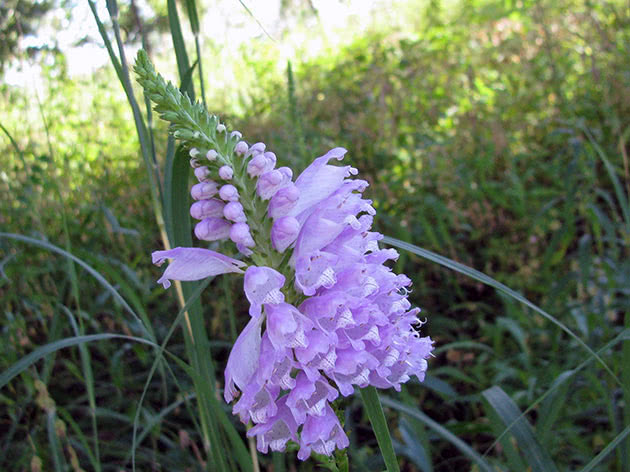
On rich soils, physostegia is fed once a year with a water-soluble complex mineral fertilizer, combining top dressing with watering the plant. It is better to do this before flowering.
Reproduction of physostegia
In addition to the generative (seed) method, vegetative methods are used for culture propagation - dividing the bush, layering, dividing the rhizome and grafting. The physostegia bush is divided in the spring, before flowering, or at the end of summer, after the plant has faded, although there were cases when a flowering plant was divided, and its parts rooted perfectly, it was only necessary to cut the inflorescence from the physostegia. The ground part of the dug plant is cut off, then the physostegia is divided and the cuttings are planted in the holes prepared in advance in the same way as the seedlings are planted.
At the beginning of summer, you can carry out cuttings of physostegia. Cuttings 10-12 cm long with several pairs of buds are cut before flowering and then rooted in the shade in a container or box of wet sand. For the winter they are transferred to a cool room, and in the spring they are planted on a training bed. The cuttings are transplanted to the flowerbed after another year.
Layers with rosettes grow away from the mother bush, without oppressing the crops growing nearby. They are dug up, planted in the shade and grown for a year, and then planted in a permanent place.
In the fall, it's time to divide the rhizome - its white segments also take root well, only a little longer than layering
It is very important in the process of rooting cuttings, parts of rhizomes or bushes to maintain the soil in a state of high humidity, while preventing stagnation of water
Arctotis: planting and care, growing from seeds
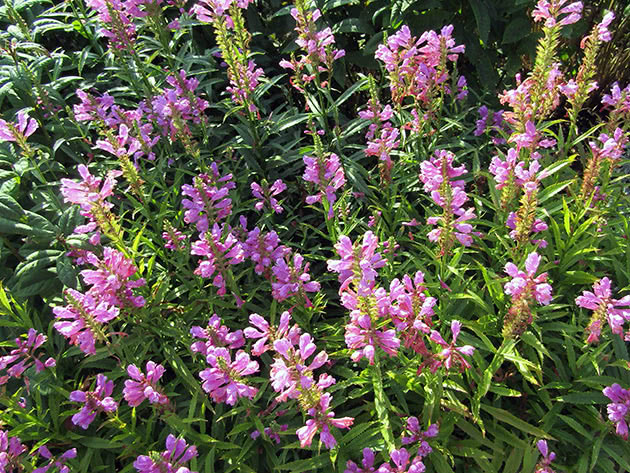
Physostegy transplant
The plant reaches its maximum decorative effect in the second or third year of growth, and in one place the physostegia can grow up to five years, after which the bushes must be divided and transplanted to another place. Physostegy transplant and caring for it after a change of place are no different from procedures such as the initial planting of physostegy and its care. Prepare a new site, dig up the plant and transplant it. Nothing complicated.Do not forget to just water the plant well after transplanting and mulch the soil around it.
Physical pests and diseases
Physostegy is extremely resistant to troubles such as the invasion of harmful insects or disease. But sometimes it happens that the whole garden is inhabited by aphids. They are saved from this pest by treating plants with Antitlin, Biotlin, Aktellik or any other insecticide that destroys sucking insects.
If suddenly you overdo it with watering, and physiostegy against the background of high humidity picks up the fungus, then, without wasting time, treat the plant with a fungicide.
Reproduction methods
You can grow physostegia in several ways:
- seeds;
- division;
- layering;
- cuttings.
Using the first method, seeds are sown directly into open soil from the second half of April to early May, they are distinguished by a very high germination capacity. The sooner they are planted, the more chances that they will bloom in the same year. In addition, the seeds overwinter very well in the soil, so they can be planted in the fall. Also, do not forget that physostegy reproduces well by self-seeding. You can grow the plant and seedlings.
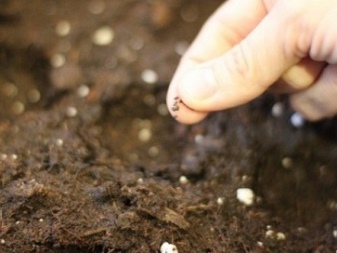
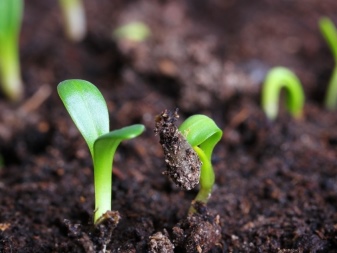
For her, the seeds are sown in March in containers, and then transferred to the greenhouse. After two weeks, seedlings begin to appear. Care for them is the same as for any seedlings: watering after the topsoil dries out, loosening the soil, protection from direct sun and drafts. When two true leaves appear, the sprouts dive. The distance between the bushes is 7-10 cm. Before planting in open soil, the seedlings should be hardened. To do this, two weeks before disembarkation, they need to be put outside every day, gradually increasing the time they spend in the fresh air.
When dividing a bush in spring or autumn, it is dug up and divided into several parts, each having at least a couple of branches. The lower part of the root is cut obliquely, and the upper part is cut straight. New plants are planted with a distance of about 50 cm.When they leave, water stagnation should be excluded, otherwise the roots will begin to rot. For the winter, they should be covered with agrofibre.
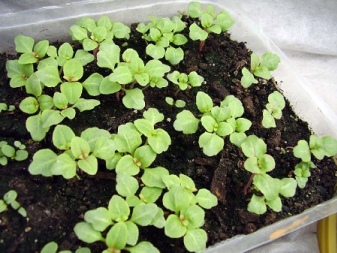

Layers are formed spontaneously on the rhizomes of physostegia. They are dug up and transplanted into a shaded growing bed. It is better to do this in the summer or in September, so that they have time to take root by the onset of cold weather. They should be covered for the winter, and at the end of spring they can already be planted in a permanent place of growth.
The method of propagation of physostegy by cuttings makes it possible to preserve all varietal characteristics. Cuttings are harvested in the summer, before the flowering of the bush. Cut shoots should be up to 12 cm long and have several pairs of buds. Cuttings are planted in a container with wet sand so that the bud is at ground level. Keep utensils in a shaded area. After planting, the sprouts are sprayed with fungicides for prophylaxis. For the winter, the containers are left in a cool room, but care must be taken to prevent the appearance of fungus.


Physiostegy care in the garden
How to grow physostegia
Growing physostegy involves regular watering of the plant, followed by loosening the soil and weeding, mulching the surface of the site, applying fertilizers, protecting against pests and diseases, if necessary, and preparing the plant for winter.

Since physostegy is moisture-loving, it requires watering during dry seasons, but if it is rainy in summer, then you do not need to worry about watering physostegy especially. In the conditions of Central Ukraine, for example, physostegy is grown without watering and feeding at all. Loosening and weeding of the site is carried out after watering or rain, but if you mulched the surface of the site with peat or humus, then it will be necessary to water, loosen, and weed the soil in a flowerbed with physostegia much less often.
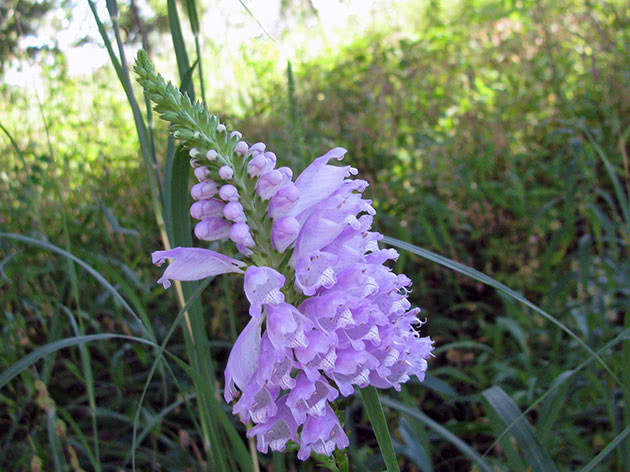
On rich soils, physostegia is fed once a year with a water-soluble complex mineral fertilizer, combining top dressing with watering the plant.It is better to do this before flowering.
Reproduction of physostegia
In addition to the generative (seed) method, vegetative methods are used for culture propagation - dividing the bush, layering, dividing the rhizome and grafting. The physostegia bush is divided in the spring, before flowering, or at the end of summer, after the plant has faded, although there were cases when a flowering plant was divided, and its parts rooted perfectly, it was only necessary to cut the inflorescence from the physostegia. The ground part of the dug plant is cut off, then the physostegia is divided and the cuttings are planted in the holes prepared in advance in the same way as the seedlings are planted.
At the beginning of summer, you can carry out cuttings of physostegia. Cuttings 10-12 cm long with several pairs of buds are cut before flowering and then rooted in the shade in a container or box of wet sand. For the winter they are transferred to a cool room, and in the spring they are planted on a training bed. The cuttings are transplanted to the flowerbed after another year.
Layers with rosettes grow away from the mother bush, without oppressing the crops growing nearby. They are dug up, planted in the shade and grown for a year, and then planted in a permanent place.
In the fall, it's time to divide the rhizome - its white segments also take root well, only a little longer than layering
It is very important in the process of rooting cuttings, parts of rhizomes or bushes to maintain the soil in a state of high humidity, while preventing stagnation of water
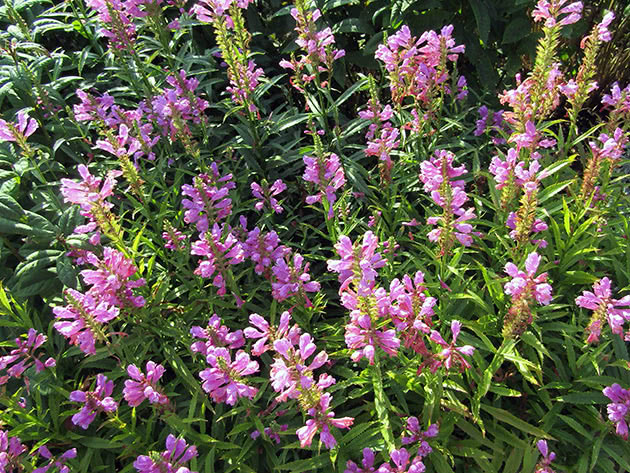
Physostegy transplant
The plant reaches its maximum decorative effect in the second or third year of growth, and in one place the physostegia can grow up to five years, after which the bushes must be divided and transplanted to another place. Physostegy transplant and caring for it after a change of place are no different from procedures such as the initial planting of physostegy and its care. Prepare a new site, dig up the plant and transplant it. Nothing complicated. Do not forget to just water the plant well after transplanting and mulch the soil around it.
Physical pests and diseases
Physostegy is extremely resistant to troubles such as the invasion of harmful insects or disease. But sometimes it happens that the whole garden is inhabited by aphids. They are saved from this pest by treating plants with Antitlin, Biotlin, Aktellik or any other insecticide that destroys sucking insects.
If suddenly you overdo it with watering, and physiostegy against the background of high humidity picks up the fungus, then, without wasting time, treat the plant with a fungicide.

